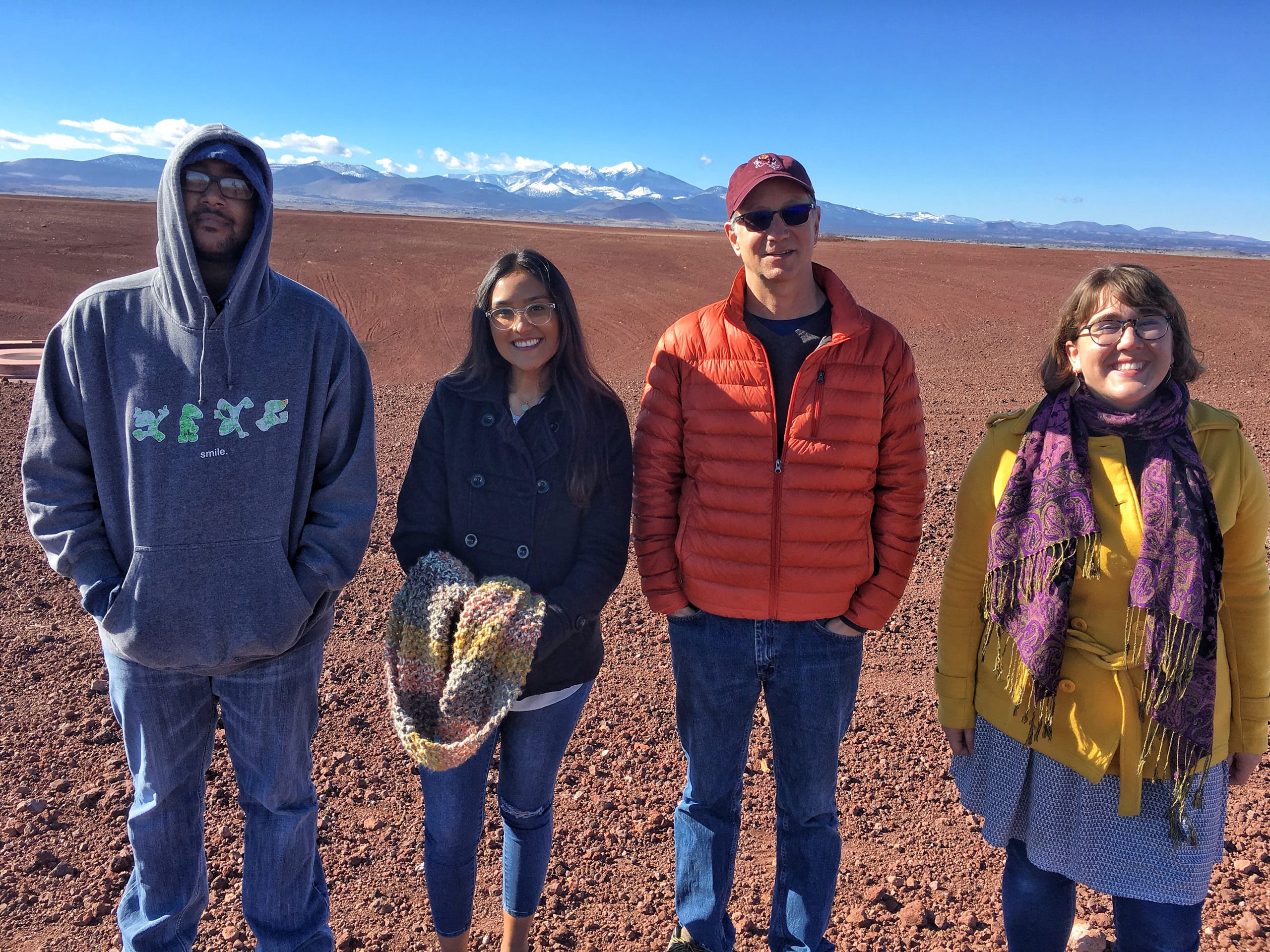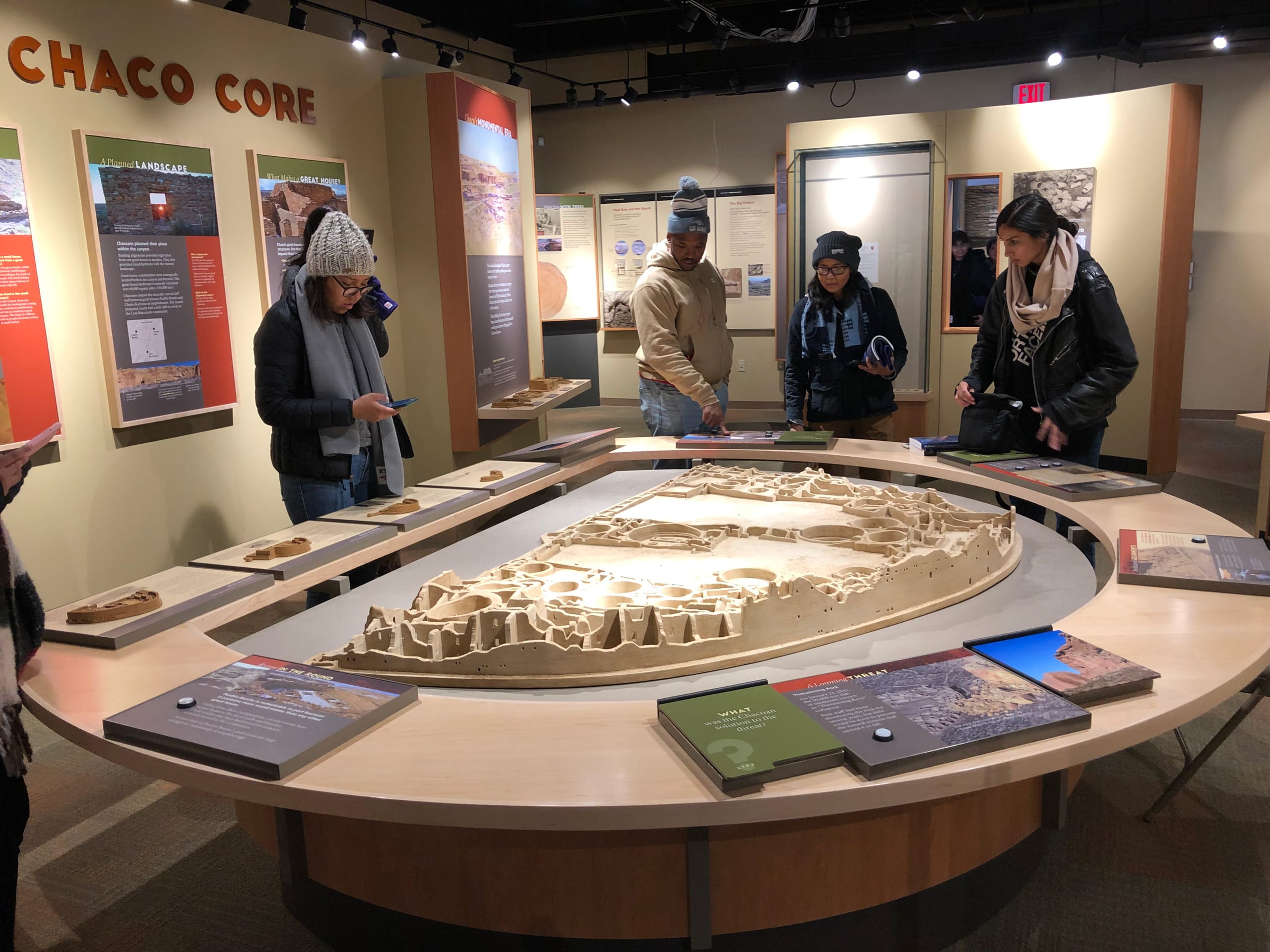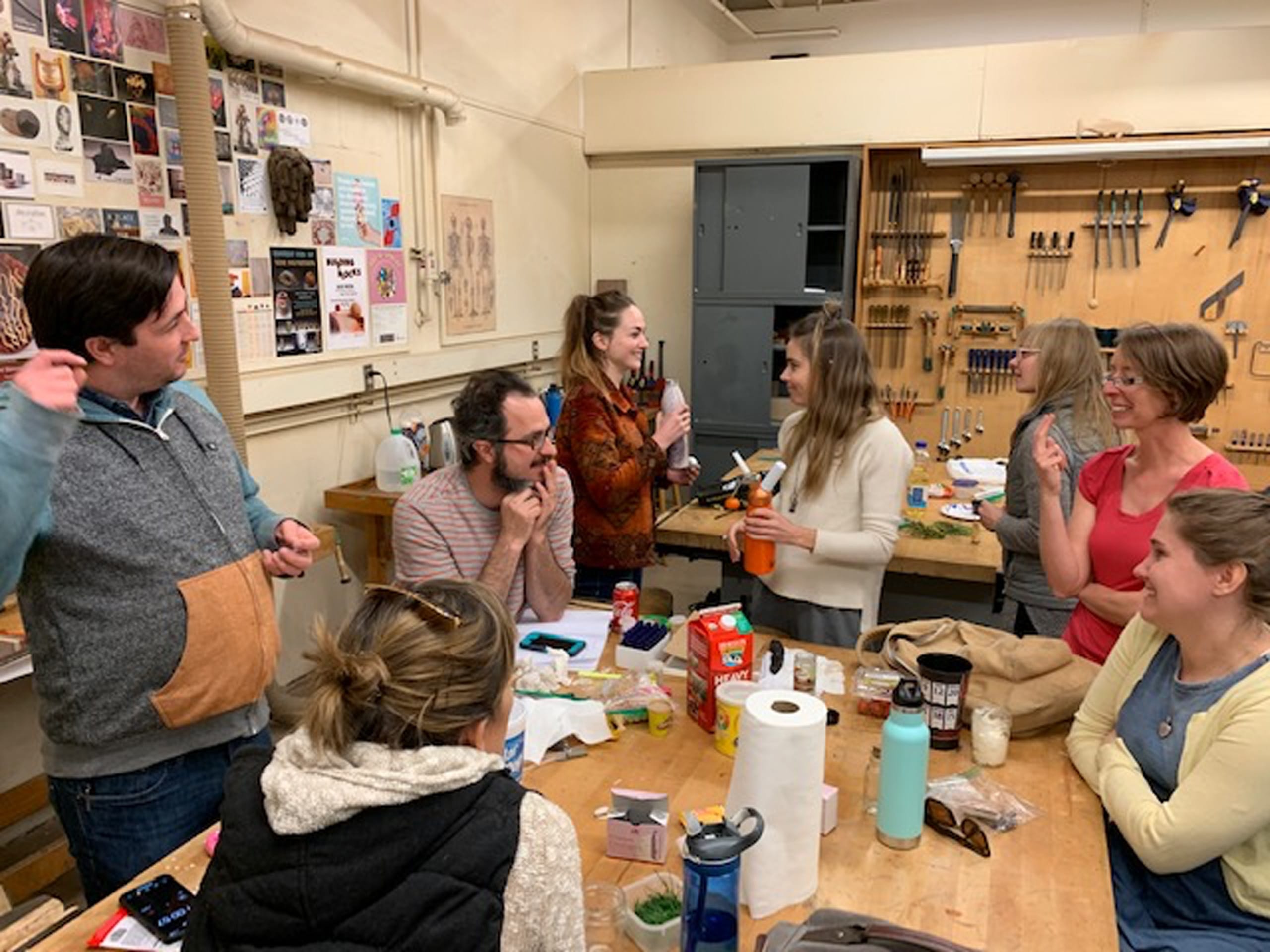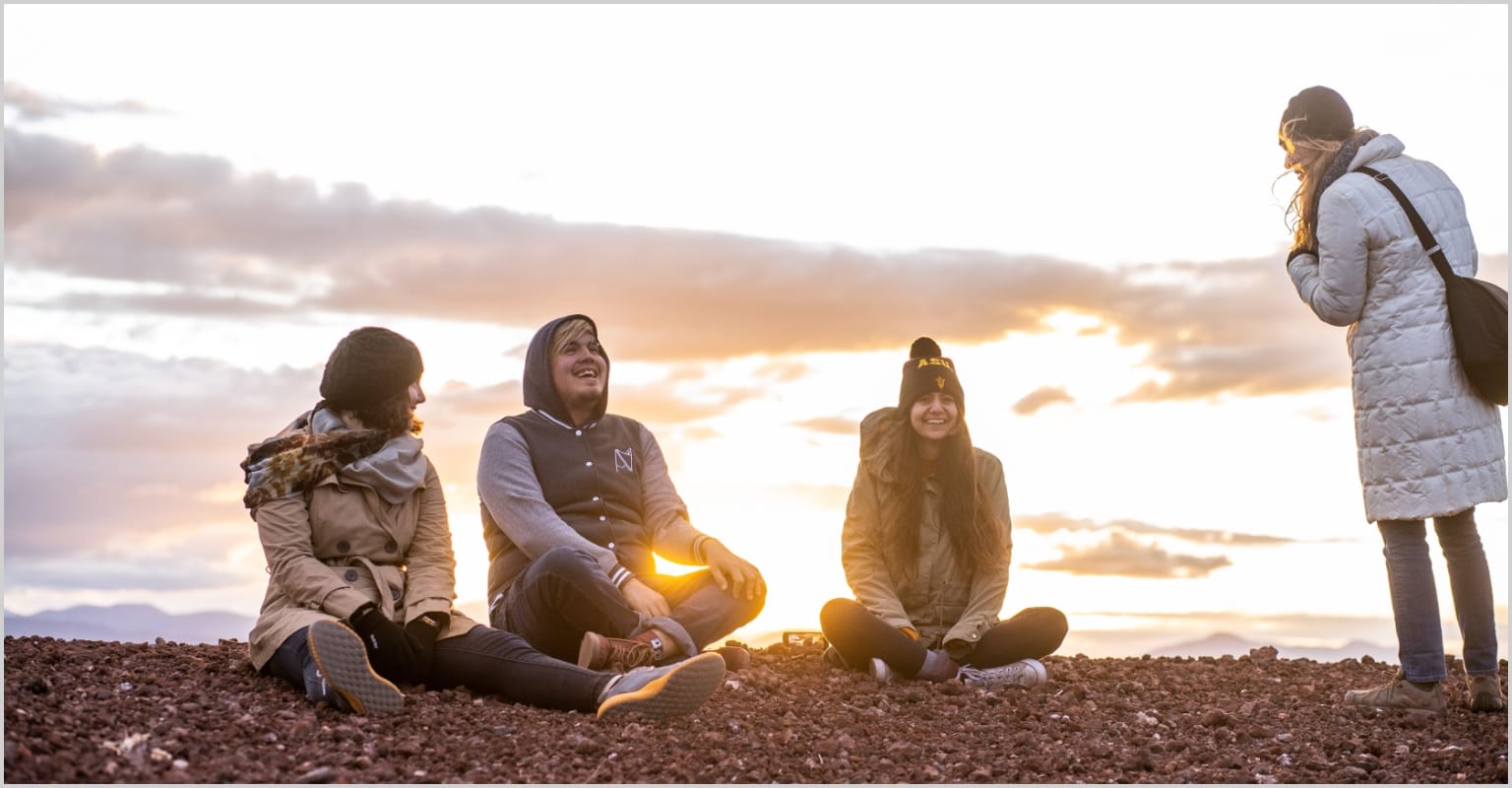Field Labs
In the fall and spring terms of the 2018-19 academic year, the Herberger Institute for Design and the Arts piloted five interdisciplinary academic field labs that explored the themes of light and land in the U.S. Southwest. Inspired by the expansive vision of James Turrell and Roden Crater, 60 students from 10 schools at ASU traveled to the volcanic fields of Northern Arizona to visit the Crater and meet the artist. They also toured neighboring sites of volcanic, geologic, cosmic and human history. Some traveled to Hopi and Navajo nations to gain an understanding from local knowledge keepers about the history of the land and peoples of the region.
The field labs in 2018 marked the first phase of academic experimentation.
Fall 2018
Volcanic Arts and Sciences
Co-taught by Lance Gharavi, Professor in the School of Film, Dance and Theatre, and Ed Garnero, Professor in the School of Earth and Space Exploration
Volcanic Arts and Sciences fused creative art with the science of volcanoes and related dynamics of the Earth’s deep interior. If the language that contextualizes Roden Crater directs attention upward, our field lab directed it downward–towards the dynamics of the Earth’s interior and those hidden processes that produced the natural architecture of the observatory. Students produced an art event focused on “The Light Within” – volcanoes and related geophysical phenomenon. They presented their work in Fall 2018, which consisted of a series of poems, a radio play and short films.

Spring 2019
Indigenous Stories and Sky Science
Wanda Dalla Costa, Institute Professor, The Design School
Roden Crater is situated in the territorial homelands of at least eight Arizona tribes. To honor local history and the continued practice of Indigenous sky science in the Southwest, this field lab viewed the Crater through the lens of Indigeneity. The students, who went on a five-day journey to Navajo Nation and the Hopi Tribe, meeting locals, interacting with place and touring sites of sky observation, shared their experience using the Indigenous placekeeping framework (IPKF). The IPK method prioritizes the local, historic and cultural; negotiates an expanded role of citizen experts and knowledge brokers; and utilizes Indigenous methodologies as a mean of accessing local narrative. The studio had one knowledge keeper or liaison from each of the communities in order to assist with local cultural understandings and protocol.

Sense, Perception and Design
Christine Lee, Professor in the School of Art and senior sustainability scholar, Global Institute of Sustainability
For the course Art and Sensory Acuity, we looked at how our perception and ability to experience a range of sensation can inform the creation of artistic and design based work. We explored perception through the lens of artist James Turrell’s Roden Crater, under which specific materials, environment, and conditions present, shaped our sensory experience. Concurrently we expanded our sensory acuity through engagement with guest speakers ASU Assoc. Professor Patrick Young and Assist. Professor Christy Spackman, Ed Krupp Director of Griffith Observatory, and writer Lawrence Weschler, to develop a deeper sensibility across media, time and space. The final projects included sculptural forms/prototypes, performance, and installations that were designed and constructed in response to the collective experience.

Expanded Field: Curating Stories and Science in Northern Arizona
Dan Collins, Professor, School of Art, director of the 3D modeling PRISM Lab, and senior sustainability scholar, Global Institute of Sustainability
In this seminar, students developed a “research compendium” focused within a 50-mile radius of Roden Crater. The principal deliverable was a collaborative exhibition that immersed visitors in a rich collection combining specimens, diagrams, interactive videos, and illustrations from many disciplines; marking the intersection of science and art; and providing viewpoints into natural, built, virtual, and spiritual worlds. It was regional in scope, using the Crater as a kind of launching pad into the broader landscape. Students engaged in an array of activities across the site—including visits to Roden Crater, fieldwork with visiting writers and artists, personal investigations, and collaborative research—using a variety of tools and methods. The resulting documents, images and models were used as resources for interdisciplinary projects that reveal the hidden dimensions of this rich “expanded field.”
Light and the Imagination
Ed Finn, Associate Professor in the School of Art, Media, and Engineering and director of the Center for Science and the Imagination
This field lab explored the nature of light as a medium for imagination. Participants explored the properties of light through approaches spanning optics, astronomy, cognitive perception, and computation. They then considered applications of light in terms of imagination, considering modes of observation such as photography, augmented and mixed reality, the archaeology of light in the context of cosmology, and other layers of experience. Finally, students created their own narratives about the power of light to illuminate and activate imagination, drawing on diverse sources such as Isaac Asimov, William Blake, Mary Shelley, Genesis, John Donne, William Gibson, Blade Runner, and Vandana Singh.

